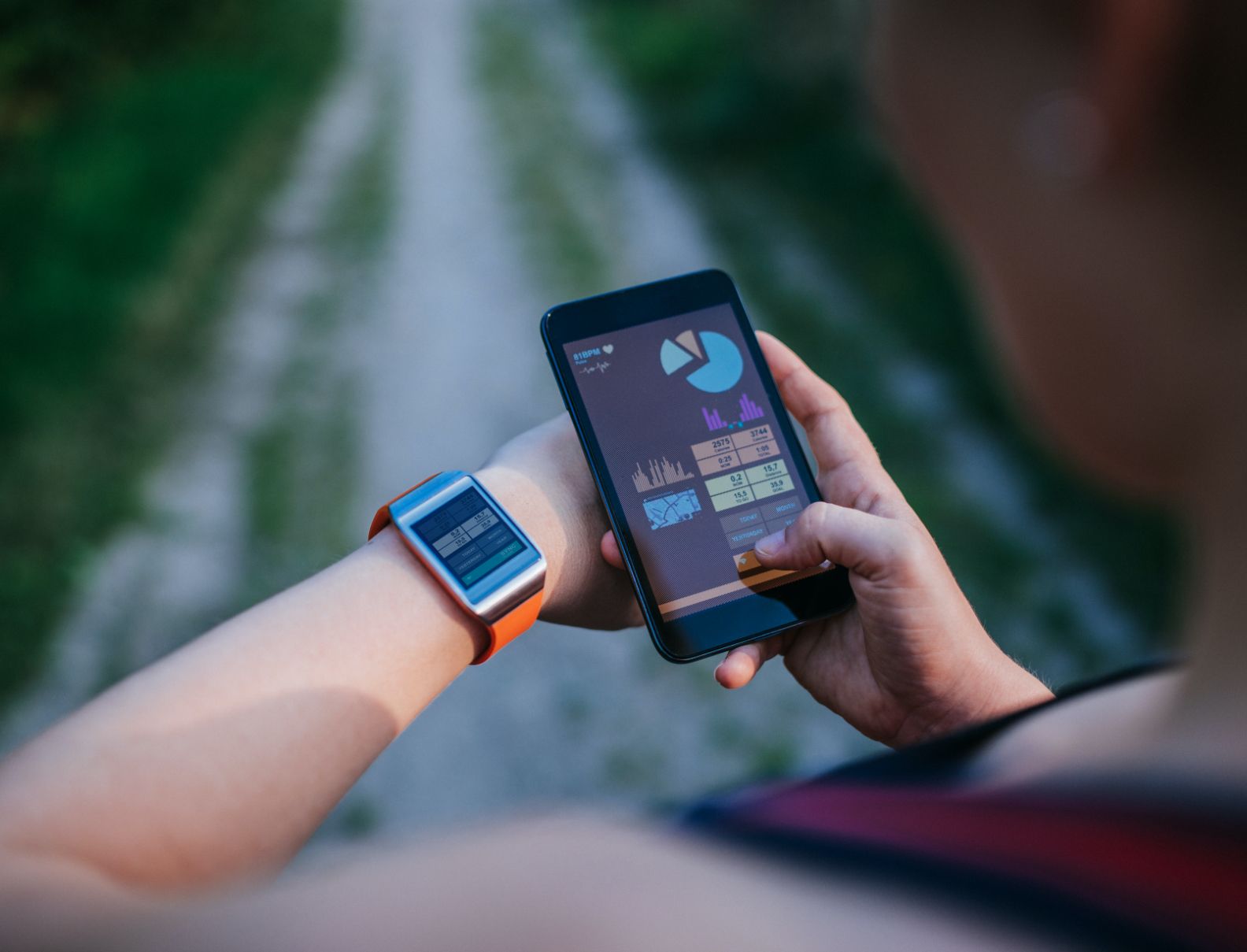Teleconsultation
- Author :
- TATA AIG Team
- ●
- Last Updated On :
- 16/10/2024
Gone are the days of waiting rooms and long commutes for a doctor's visit. Teleconsultation lets you connect with a healthcare professional remotely through video or phone calls or even secure messaging.
Whether you need a quick consultation for a minor illness or a follow-up appointment with a specialist, telemedicine consultation offers a convenient and accessible way to get the care you need right from the comfort of your home.
In this blog, we will explore the benefits of teleconsultation and its types and answer frequently asked questions to help you decide if it is the right choice for you.
Types of Teleconsultations
Teleconsultation offers more than just video consultations with doctors. Let us explore some of its key delivery methods:
Synchronous Telemedicine: This is the familiar "virtual visit" where you connect with a healthcare provider in real time using videoconferencing. It is ideal for consultations, urgent care needs and follow-up appointments where a two-way conversation and examination are necessary.
Asynchronous Telemedicine (Store-and-Forward): This method involves sending pre-recorded medical information, like symptoms and images, to a specialist for review. The doctor analyses the data and responds at their convenience, often within 24-48 hours. It is suitable for non-urgent concerns where a physical exam is not crucial.
Remote Patient Monitoring (RPM): This involves using devices like wearables or apps to track your health data, such as blood pressure and heart rhythm at home, and transmit it securely to your doctor. This allows for continuous monitoring of chronic conditions and early detection of potential issues.
Mental Health Telemedicine: Teletherapy allows you to connect with therapists or counsellors virtually for consultations and therapy sessions. It provides a safe and convenient way to access mental health services, especially for those in remote areas or facing challenges with in-person visits.
Benefits of Teleconsultation
Teleconsultation is often a part of a group health insurance policy and offers great convenience to policyholders. However, teleconsultation is not just about convenience; it offers a range of advantages for both patients and healthcare providers:**
Convenience and Time-Saving: Skip the long commutes and waiting rooms! Schedule appointments that fit your busy schedule, even evenings or weekends. No more taking time off work or arranging childcare.
Improved Access to Care: Telemedicine bridges geographical gaps. It is a lifeline for those in rural areas or with limited mobility. Need a specialist unavailable locally? Connect with them virtually.
Reduced Costs: Save on transportation, parking fees, and even childcare costs associated with in-person visits. Some teleconsultations may also be more affordable than traditional appointments.
Enhanced Patient Satisfaction: Telemedicine empowers you to manage your health more actively. You can connect with your doctor for quick consultations, medication refills, or test results discussions.
Improved Chronic Disease Management: Remote patient monitoring allows for continuous tracking of vital signs, enabling early detection of problems and adjustments to treatment plans.
Reduced Exposure to Illness: COVID teleconsultation can minimise the spread of the virus as you avoid crowded waiting rooms. This is also beneficial for immunocompromised individuals or during flu seasons.
Better Communication and Patient Engagement: Virtual consultations can sometimes lead to more focused discussions with your doctor compared to a fast-paced in-person visit. You can easily share your health concerns and ask questions in a comfortable setting.
Telehealth and Telemedicine: Two Branches of Teleconsultation
Online teleconsultation is a key component of the broader telehealth spectrum, closely related to telemedicine. To understand its context, let us dig deeper into telehealth and telemedicine.
What is Telehealth?
**Telehealth encompasses a broad range of remote healthcare services facilitated by technology, bridging the gap between medical practitioners and patients or other healthcare providers. It includes both clinical and non-clinical services.
Clinical Services: These involve direct patient care provided remotely. For instance, a paediatrician conducting a virtual consultation with a child, a dietitian offering nutritional advice through a video call, or a psychiatrist providing therapy sessions online.
Non-Clinical Services: These support the healthcare system's administrative and educational needs. Examples include virtual administrative meetings, medical education webinars, training sessions for healthcare providers, and remote monitoring of public health data.
What is Telemedicine?
Telemedicine online consultation is a subset of telehealth, focused specifically on the remote delivery of clinical services to patients. It leverages digital technologies to provide medical care without requiring in-person visits.
Digital Applications and Communication Tools: Online telemedicine consultation employs various digital platforms, such as teleconferencing software, specialised healthcare apps, and secure messaging systems, to connect healthcare providers with patients.
Clinical Applications: Patients can utilise telemedicine for various purposes, including:**
Follow-Up Consultations: Continued care and check-ups after an initial in-person visit.
Specialist Consultations: Access to expert opinions and diagnoses from specialists regardless of geographical barriers.
Medication Management: Remote prescription renewals and management of medication regimes.
Chronic Disease Management: Ongoing monitoring and management of chronic conditions like diabetes or hypertension through regular virtual check-ins and data sharing.
Roadblocks to Getting the Best Out of Teleconsultation
For teleconsultation to become a natural part of healthcare, it must closely follow established models and norms of specialist consultations. However, there are several challenges that can hinder its effectiveness.
Digital Literacy
A significant roadblock is digital literacy, especially in rural areas. Many people in these regions lack the necessary skills to use digital platforms effectively. This issue is even more pronounced among women and children, who often have greater healthcare needs but lower access to digital tools.
The lower digital penetration among India's female population further alienates them from teleconsultation services.
Lack of Personal Touch
The absence of a personal touch or physical connection with the healthcare provider can lead to dissatisfaction. Many patients value in-person interaction and feel more reassured when they can physically visit their doctor.
This lack of personal connection in teleconsultation can affect patient compliance with medical advice.
Physical Examination Limitations
One key limitation of teleconsultation is the inability to examine patients physically. This can leave an assessment feeling incomplete, as some conditions require a hands-on examination to diagnose accurately.
Even with advanced diagnostic tools, some nuances of a physical exam cannot be replicated digitally.
Things to Consider During Teleconsultation
To make the most of your teleconsultation session, consider these important steps:**
Prepare Your Questions: Before your appointment, write down a list of questions and concerns you want to discuss with your doctor. This ensures you cover all important points during the consultation.
Gather Your Medical Records: Have your existing medical reports ready in digital format (preferably PDF). Include any relevant images or test results you may need to share with the doctor. This will help provide a comprehensive view of your health condition.
Check Your Equipment: Ensure that your microphone is functioning properly. Test it before your appointment to avoid any technical issues that could disrupt communication.
Create a Quiet Environment: Find a noiseless space for your consultation to avoid background noise and distractions. This will help you and your doctor communicate more effectively.
Ensure a Strong Internet Connection: Ensure that your Wi-Fi connection is stable and fast enough to support a video call. A poor connection can lead to interruptions and affect the quality of your consultation.
Position Your Camera Properly for Video Consultation: Place your camera at eye level. This makes the interaction feel more personal and helps your doctor see you clearly, which can be important for certain assessments.
Why Having Health Insurance is Advisable?
While teleconsultation offers a convenient and often affordable way to access healthcare, unexpected medical situations can still arise. Here is where having a comprehensive health insurance plan, like those offered by Tata AIG, becomes crucial.
Tata AIG offers individual and group health insurance plans that can cover a variety of medical expenses, including hospitalisation costs, specialist consultations, and diagnostic tests. This financial safety net ensures you can focus on getting the best possible care without worrying about the bills.
Many Tata AIG plans even cover teleconsultations, allowing you to leverage the benefits of both. You can connect with a doctor from one of our network hospitals virtually for an initial consultation or follow-up, potentially reducing the need for in-person visits and keeping your out-of-pocket expenses lower.
By combining teleconsultation with a well-rounded health insurance plan from Tata AIG, you are creating a strong foundation for proactively managing your health and finances.
If you are a business looking to protect your business and its employees from unforeseen incidents, consider our Business Insurance plans.
FAQS
Can teleconsultation services support patients with disabilities or those needing assistive communication technologies?
Yes, teleconsultation services can accommodate patients with disabilities. Many platforms now include features like text-to-speech, voice recognition, and sign language interpretation. These tools help make telehealth accessible to everyone, ensuring that all patients can receive the care they need.
What should I expect after my teleconsultation?
After your teleconsultation, your doctor will provide you with a detailed document, usually in PDF format. This document will include:
Prescribed Medications: A list of any medications prescribed, along with dosage instructions and duration.
Recommendations: Advice on lifestyle changes, dietary suggestions, or other non-pharmacological recommendations to help manage your condition.
Follow-Up Instructions: Information on any necessary follow-up appointments or additional tests that might be required.
Contact Information: If you have further questions or need additional assistance, you can reach your doctor or their office.
—-----------------------------------------------------------------------------------
Disclaimer / TnC
Your policy is subjected to terms and conditions & inclusions and exclusions mentioned in your policy wording. Please go through the documents carefully.



